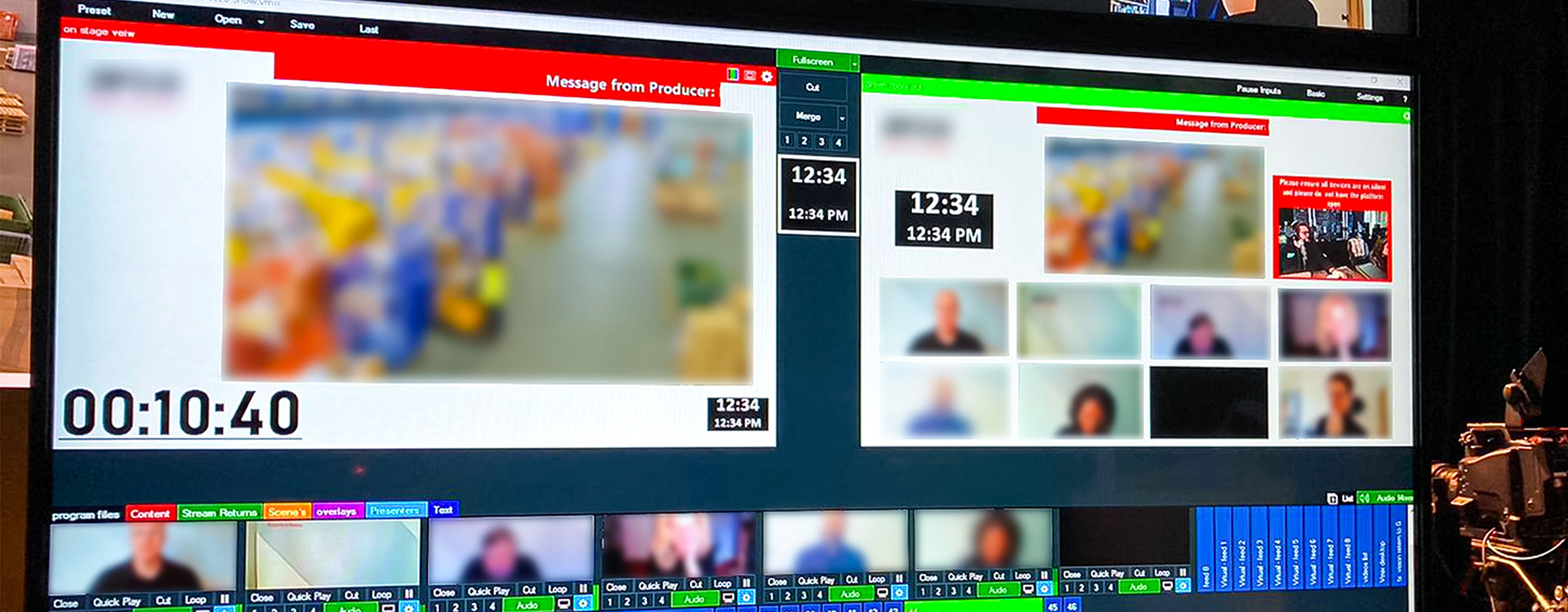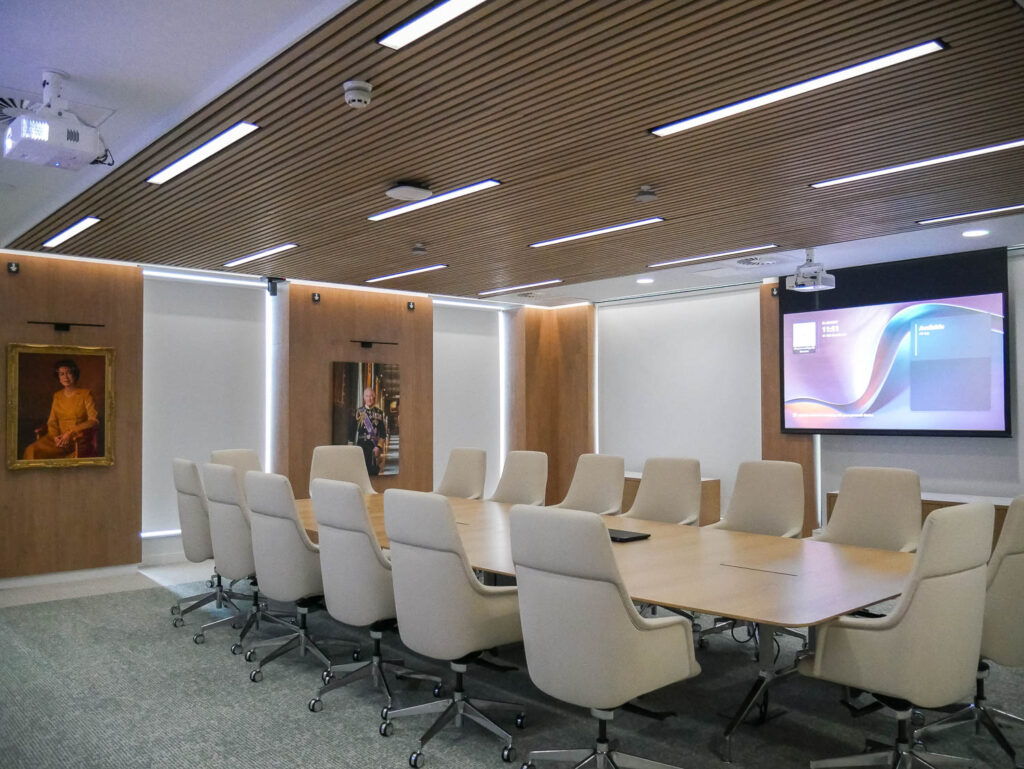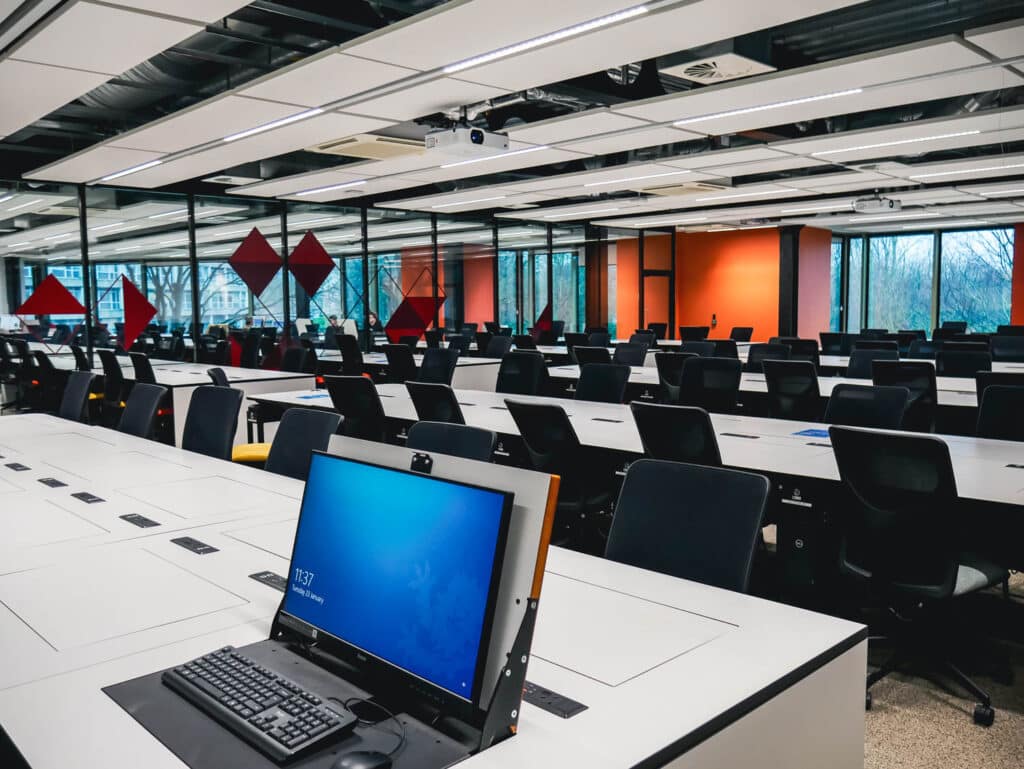What is the Difference Between Hybrid and Blended Learning?

In today’s fast-evolving education and training landscape, technology has transformed how we learn and teach. Two terms often used interchangeably—blended learning and hybrid learning—are actually distinct approaches with unique advantages. Understanding these differences is crucial for educators, organisations, and institutions looking to enhance their learning environments with audio-visual (AV) technology.
What is Blended Learning?
Blended learning is a learning model that combines traditional face-to-face instruction with digital resources and online components. It allows learners to experience a mix of in-person interaction and self-paced online learning, creating a more flexible and engaging educational experience.
AV technology plays a significant role in blended learning by enhancing collaboration, engagement, and accessibility. Interactive displays, projectors, and video conferencing solutions enable seamless integration between in-person and digital learning, ensuring students and employees can interact with materials and instructors in meaningful ways.
The Benefits of Blended Learning
Blended learning provides numerous advantages, particularly when supported by AV solutions:
- Flexibility: Learners can access digital materials at their own pace while still benefiting from in-person instruction.
- Enhanced Engagement: Interactive AV tools make learning more dynamic and immersive.
- Personalisation: Adaptive learning technologies allow instructors to tailor experiences based on learner needs.
- Improved Retention: A mix of multimedia resources, such as videos and live demonstrations, supports different learning styles.

What is Hybrid Learning?
Hybrid learning, while similar to blended learning, differs in a fundamental way: it allows learners to participate in real-time either in-person or remotely. This model ensures that both in-class and online participants receive the same level of engagement and interaction, often through AV technology.
For hybrid learning to be effective, robust AV integration is essential. High-quality cameras, microphones, and conferencing systems create an inclusive environment where remote learners can interact as if they were physically present. Lecture capture solutions and smart classrooms further enhance hybrid learning experiences.
The Benefits of Hybrid Learning
Hybrid learning offers distinct advantages, particularly in higher education and corporate training settings:
- Inclusivity: Enables participation from anywhere, accommodating remote learners and those with mobility restrictions.
- Cost-Effectiveness: Reduces travel and accommodation costs for learners and instructors.
- Scalability: Institutions can reach a broader audience without increasing physical infrastructure.
- Real-Time Collaboration: Advanced AV tools ensure remote and in-person learners engage equally in discussions and group work.

What are the Key Differences Between Blended and Hybrid Learning?
While blended and hybrid learning share some similarities, their fundamental differences include:
Learning Structure
- Blended Learning: A fixed combination of face-to-face instruction and digital content.
- Hybrid Learning: Allows real-time participation from both physical and remote locations.
Flexibility
- Blended Learning: More structured with scheduled in-person and online components.
- Hybrid Learning: Greater flexibility, as learners can choose how they participate.
Technology Integration
- Blended Learning: Relies on digital resources to supplement traditional instruction.
- Hybrid Learning: Requires real-time AV solutions to ensure seamless interaction between remote and in-person learners.
Ideal Use Cases
- Blended Learning: Best for situations where self-paced learning complements in-person sessions.
- Hybrid Learning: Suited for global teams, distance education, and institutions offering flexible attendance options.

AV’s Role in Education
Audio-visual technology is at the heart of both blended and hybrid learning, ensuring effective delivery and engagement. Some key AV solutions that enhance learning environments include:
- Interactive displays and whiteboards to support collaboration and group activities.
- Video conferencing solutions for real-time remote participation.
- Lecture capture technology to record and archive lessons for future reference.
- Acoustic panels and sound systems to improve audio clarity in both physical and virtual settings.
Why Choose Universal AV?
Selecting the right AV solutions can be complex, but that’s where Universal AV comes in. As an experienced AV integrator, we don’t just provide products—we offer comprehensive solutions tailored to your educational or corporate learning needs.
From consultation and design to installation and support, we ensure you have the best technology to create engaging and effective learning environments.
Understanding the differences between blended and hybrid learning is key to choosing the right approach for your institution or organisation. Both models benefit greatly from AV integration, ensuring enhanced engagement, flexibility, and inclusivity. With Universal AV’s expertise, you can create a learning environment that meets the needs of all learners, whether in-person or remote.
Interested in transforming your learning spaces with cutting-edge AV technology? Contact Universal AV today to find the perfect solution for your needs.
Start your project today
To discuss your audio visual needs for your next project contact us. We will work with you to devise a solution to meet your requirements and needs.
Call 01274 200280
Email sales@uniav.com
Send us a message
"*" indicates required fields